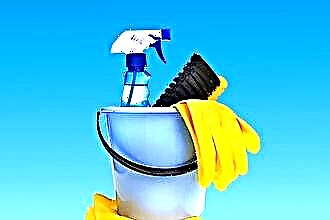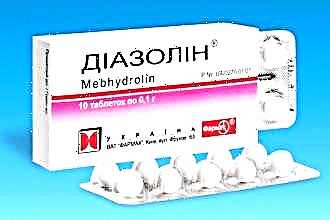 What to do if a stuffy nose with allergies? This is what will be discussed in this publication. The discomfort associated with the lack of nasal breathing leads to headaches, deterioration of mood and general condition in general.
What to do if a stuffy nose with allergies? This is what will be discussed in this publication. The discomfort associated with the lack of nasal breathing leads to headaches, deterioration of mood and general condition in general.
Among the most common allergens, it is worth highlighting:
- food products (seafood, soy, eggs, honey, citrus fruits, strawberries, chocolate);
- perfumes and other products with strong aromas;
- dust;
- pollen;
- household chemicals;
- hygiene products;
- ticks;
- wool;
- insect bite;
- mold;
- medicines, vaccines.
Depending on the genetic predisposition and the activity of the immune system, the body can perceive absolutely harmless substances as an aggressive factor. When a person comes into contact with an allergen, an increased production of immunoglobulins begins, which are aimed at combating "pests".
As a result of their capture, a complex is formed that circulates through the bloodstream, provoking the appearance of symptoms of an allergic reaction.
Symptoms
An allergic reaction can be accompanied by various symptoms that differ in severity and duration. The main clinical signs of the disease:
- frequent sneezing;
- nasal congestion;
- profuse, watery rhinorrhea;
- itching of the skin, eyes, nose;
- cough, shortness of breath;
- skin rashes;
- swelling of the lips, face, neck;
- dyspeptic disorders.
The reaction of the immune system to the action of an allergen can be expressed in the form of anaphylactic shock. This condition requires immediate attention.
To quickly notice anaphylactic shock, you should pay attention to:
- the intensity of the edema, rash; blood pressure level (usually it decreases);
- the severity of shortness of breath (shortness of breath may be caused by bronchospasm or swelling of the neck, due to which the organs of the respiratory tract are compressed);
- the presence of vomiting, nausea;
- level of consciousness (a person may be inhibited or completely lose consciousness);
- severe weakness;
- fast pulse.
If medical assistance is not provided in a timely manner, a lethal outcome is possible.
To prevent the development of anaphylactic shock, it is necessary to consult an allergist when the first signs of an allergic reaction appear. Thanks to a complete examination, he accurately determines the type of allergen and determines the further treatment tactics.
Treatment activities
Treatment should include several methods that are aimed at inhibiting the development of an allergic reaction and improving the general condition of a person. What is the task of therapy?
- termination of contact between the provoking factor and the person;
- desensitization;
- the use of medications to eliminate the symptom complex.
Limiting interaction with the allergen
To cure nasal congestion with allergies, it is necessary to limit contact with the provoking factor, as well as accelerate its elimination from the body. To do this, you should:
- R
 Regularly carry out wet cleaning, ventilate the room, which will reduce the concentration of allergens in the room;
Regularly carry out wet cleaning, ventilate the room, which will reduce the concentration of allergens in the room; - use hypoallergenic household chemicals (powders, detergents);
- adhere to a dietary diet;
- take sorbents;
- reduce the number of books, carpets, throw pillows and other items in the room that can accumulate dust;
- give animals to neighbors or relatives;
- give up perfumes, cosmetics with pungent odors;
- remove flowering plants from the room;
- during the flowering period of plants, ventilate the room only in calm weather so that large quantities of pollen do not penetrate the room. It is advisable to carry out airing after rain.
Desensitization
If nasal congestion with allergies cannot be eliminated with medication, the doctor may suggest specific immunotherapy. It involves the introduction of the allergen in the minimum dosage during the remission of the allergy.
The body gradually adapts to the action of the provoking factor, which reduces the severity of the disease. The person's condition improves until complete recovery. In the future, the immune system no longer perceives this factor as an allergen.
Desensitization is carried out under medical supervision, which makes it possible to assess the result of immunotherapy.
Medication assistance
Many of us, having felt an improvement in our condition, stop taking medications on our own, which is the wrong decision. The fact is that a temporary decrease in the severity of symptoms is due to the accumulation of the drug. As its concentration in the body decreases, the clinical signs of the disease return.
In the future, previously used medications may not have a therapeutic effect, which requires their replacement and correction of therapy.
Allergies can be treated with drugs for local and systemic use, which in combination gives a good result.
Nasal preparations
Local treatment consists in the use of drops, aerosols for nasal administration.
Antihistamines
The action of medicines in this group is aimed at stopping the allergic reaction, as a result of which the severity of symptoms decreases.
| Name | Dosage | Contraindications | Side effects |
|---|---|---|---|
| Allergodil | 1 injection twice a day | Hypersensitivity, up to six years of age | Itching, burning sensation, sneezing, nasal bleeding |
| Tizine Allergy | 2 injections twice | Hypersensitivity, renal dysfunction, children under six years of age, lactation | Dry mucous membranes, increased congestion, cough, skin rash, headache, dizziness |
Before the introduction of the drug, it is necessary to clean the nasal passages with saline solution (Dolphin, Humer, Aqualor).
Mast Cell Stabilizers
The therapeutic effect of the drugs is aimed at reducing the severity of tissue edema and rhinorrhea. Cromohexal is widely prescribed for allergic rhinitis. It is contraindicated until the age of two, with hypersensitivity. After the injection of the drug into the nasal cavities, dryness, burning sensations may appear, and rhinorrhea may worsen. Used two drops three times a day.
Combined drugs
When a stuffy nose with allergies, you can use drugs that consist of components with a different mechanism of action. Combined drugs have vasoconstrictor, antihistamine properties.
| Name | Contraindications | Side effects | Dosage |
|---|---|---|---|
| Vibrocil | Up to a year, atrophic type of rhinitis, taking antidepressants | Dryness, burning sensation | Two injections three times |
| Sanorin Anallergin | Hypersensitivity, hypertension, increased thyroid function | Irritability, skin rash, headache, nausea. | Three drops three times |
Vasoconstrictor medicines
The task of drugs in this group is to reduce the diameter of blood vessels at the injection site, after which tissue edema and rhinorrhea are reduced.
| Name | Contraindications | Side effects | Dose |
|---|---|---|---|
| Xylo Mefa, Snoop, Farmazolin | Hypersensitivity, period up to two years of age, hypertension, pregnancy, arrhythmia | Sneezing, dyspeptic disorders, cardiac arrhythmia, visual impairment, headache, sleep disturbance | One injection three times |
| Nazivin, Nazol | Hypersensitivity, glaucoma, atrophic type of rhinitis | Sneezing, itching, burning sensations, heart palpitations, headache, sleep disturbances, fluctuations in blood pressure | 1 injection twice |
Exceeding the dosage and duration of use of vasoconstrictor drugs is fraught with the development of medication rhinitis.
Hormonal medications
In the case of a severe course of allergy, if antihistamines are ineffective, hormonal agents may be prescribed. They have a powerful anti-inflammatory, anti-allergic effect.
| Name | Contraindications | Side effects | Doses |
|---|---|---|---|
| Avamis, Nazarel | Hypersensitivity | Bronchospasm and swelling of the tongue as a manifestation of hypersensitivity, headache, nasal bleeding, increased intraocular pressure, dryness, sore throat | Two injections twice |
| Nazonex, Dezrinit | Hypersensitivity | Nasal bleeding, headache, sore throat, burning sensation in the nose, ulcerative lesions of the mucous membrane. | Two injections twice |
| Nasobek, Beconase | Hypersensitivity, fungal infection of the nasopharynx, severe asthma | Dryness, sore throat, unpleasant taste, nasal bleeding, cough | Two injections twice |
Tablet forms
Allergy treatment must necessarily include the appointment of drugs for systemic action:
- antihistamines;
- mast cell stabilizers;
- corticosteroids.
Now more about each group of drugs.
Antihistamines
There are several generations of drugs, the action of which is aimed at blocking allergies:
 the first includes Diazolin, Suprastin. Among the advantages, one should highlight a quick therapeutic effect (the first 20 minutes), as well as a wide experience in their use. Complications include addiction, drowsiness;
the first includes Diazolin, Suprastin. Among the advantages, one should highlight a quick therapeutic effect (the first 20 minutes), as well as a wide experience in their use. Complications include addiction, drowsiness;- representatives of the second generation (Claritin, Erius) have fewer undesirable effects and a longer therapeutic effect. Note that they negatively affect the myocardium;
- third generation. Medicines can be prescribed in a long course. A prominent representative is Tsetrin, Levocabastin, Telfast, Loratadin, Ksizal, Fenistil.
Mast Cell Stabilizers
The therapeutic effect develops rather slowly, so they are prescribed in combination with "fast" medications. Among the drugs, it is worth highlighting Ketotifen, Cromolin, Intal.
Hormonal medications
Medications with hormonal components are prescribed to quickly relieve an allergy attack. Due to the powerful composition, the drugs reduce the severity of symptoms as soon as possible, after which weaker antihistamines are prescribed.
With prolonged use of hormonal drugs, addiction develops, and serious complications arise associated with dysfunction of internal organs.
Treating allergies is challenging but achievable. It is quite difficult to cope with the disease on your own, so you should not wait for complications and postpone a visit to the doctor.

 Regularly carry out wet cleaning, ventilate the room, which will reduce the concentration of allergens in the room;
Regularly carry out wet cleaning, ventilate the room, which will reduce the concentration of allergens in the room; the first includes Diazolin, Suprastin. Among the advantages, one should highlight a quick therapeutic effect (the first 20 minutes), as well as a wide experience in their use. Complications include addiction, drowsiness;
the first includes Diazolin, Suprastin. Among the advantages, one should highlight a quick therapeutic effect (the first 20 minutes), as well as a wide experience in their use. Complications include addiction, drowsiness;

